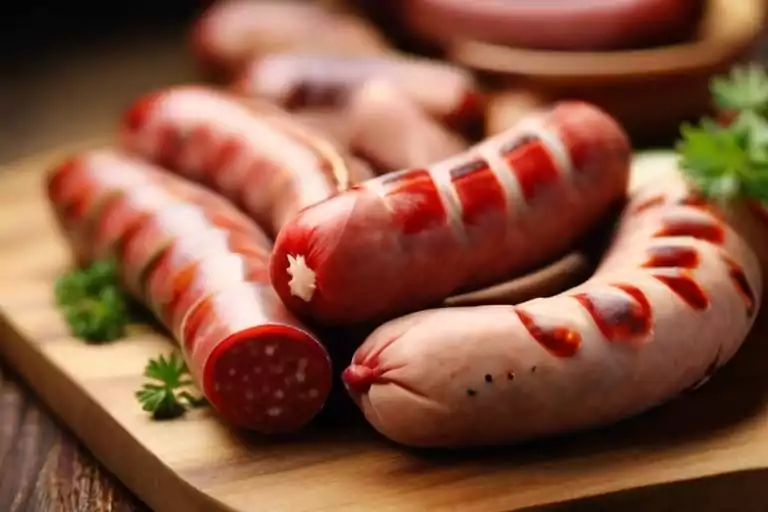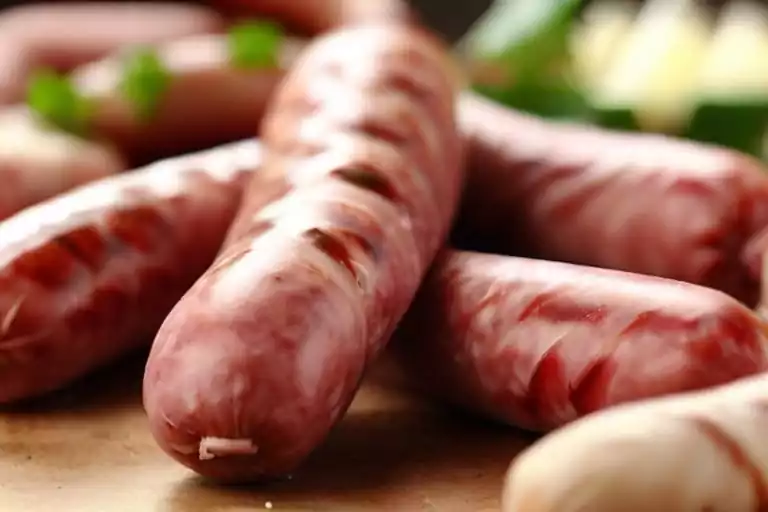Introduction to Kielbasa
The Popularity and Versatility of Kielbasa
Kielbasa, a culinary gem, has captured the hearts of food enthusiasts around the world. Renowned for its versatility, this Polish sausage has seamlessly found its way into an array of dishes. Whether it’s grilled, baked, or fried, kielbasa brings a unique and robust flavor to every meal. It’s not just a sausage; it’s a culinary chameleon, effortlessly fitting into various cuisines and occasions, from cozy family dinners to grand festive celebrations.
Definition and Pronunciation
Kielbasa, pronounced “keel-bah-sah”, transcends being just a type of sausage. It’s an umbrella term encompassing the rich diversity of Polish sausages. The name, rooted in Turkish origins, refers to traditional sausage-making techniques. But there’s more to kielbasa than just its name. It embodies a spectrum of tastes, ingredients, and preparations, each variant with its own unique story and heritage.
The allure of kielbasa lies not just in its savory taste but also in the cultural narratives it weaves. It represents a slice of Polish history, served in a flavorful, smoky ensemble. As we delve deeper, we’ll uncover the historical roots, the various types, and the culinary techniques that have elevated kielbasa to a revered position in the gastronomic world.
Join us as we continue this savory expedition, uncovering the storied past and rich traditions that have shaped kielbasa into a symbol of culinary craftsmanship.
The Rich History of Polish Sausages
Early References and Evolution
Kielbasa holds a rich historical tapestry, stretching back to ancient times. Early civilizations, from Mesopotamia to China, pioneered the art of making sausages, stuffing seasoned meat into various casings. The Greeks and Romans, as chronicled by Homer and Aristophanes, also embraced this culinary tradition.
Poland’s sausage-making journey flourished in the 14th century. Royal hunting expeditions brought an abundance of game meat, sparking innovative approaches to sausage preparation. Historians, like Jan Długosz in his Annales, document the distinctive Polish method of smoking sausages, differing from the drying techniques of other cultures.
The Influence of Industrialization
The 19th century’s wave of industrialization revolutionized kielbasa production. Transitioning from home kitchens and small artisanal shops, kielbasa entered the realm of commercial manufacturing. This change expanded its reach, introducing the flavors of Poland to wider audiences, both domestically and internationally.
In Polish culture, kielbasa stands as a symbol of festivity and abundance, especially during Easter celebrations. Its presence in households during these times embodies a spirit of unity and joy.
Through the ages, kielbasa has become more than a food item; it’s a cultural emblem, showcasing Polish resilience and culinary ingenuity. This historical context paves the way for our exploration of the diverse varieties and intricate methods involved in preparing kielbasa, which we’ll delve into next.
Key Ingredients of Kielbasa
Variety of Meats Used
Kielbasa makers traditionally use a range of meats, each lending a unique flavor and texture. Pork often takes center stage, revered for its fat content and succulence. However, the versatility of kielbasa shines through as artisans also incorporate beef, turkey, chicken, and even more exotic meats like lamb and venison. This variety ensures a wide spectrum of tastes, catering to diverse palates and culinary traditions.
Spices and Flavorings
The essence of kielbasa‘s flavor lies in its spice blend. Garlic frequently stars in these recipes, imparting a robust aroma and taste. Pepper, marjoram, and thyme are other common spices, each adding their distinct notes. The careful balance of these spices is crucial, as they must complement the meat without overpowering its natural flavors.
The Making of Kielbasa
Grinding and Mixing
The process begins with grinding the chosen meats, a step that significantly influences the sausage’s texture. While some kielbasa types require finely ground meat, others call for a coarser grind. Following the grinding, the meat mixes with fat and spices, creating a blend where flavors meld and mature.
Casing and Stuffing Methods
Stuffing the meat mixture into casings is an art in itself. Traditionally, makers use natural casings like pork intestines, although modern alternatives are also available. The key is to fill the casings evenly, avoiding air pockets and ensuring they’re not overstuffed to prevent bursting.
Smoking and Drying Processes
Finally, kielbasa undergoes smoking and drying, steps that not only preserve the sausage but also infuse it with a distinctive smoky flavor. The duration and technique of smoking vary, contributing to the diversity in taste and texture among different types of kielbasa.
This careful blend of ingredients and meticulous preparation process defines kielbasa, making it a beloved sausage with rich flavors and a heritage that resonates in every bite.
Exploring Different Types of Kielbasa
Regional Varieties
Each region in Poland offers its unique take on kielbasa, reflecting local tastes and traditions. For instance, Kiełbasa Krakowska, originating from Krakow, is known for its coarse texture and rich garlic flavor. In contrast, Kiełbasa Lisiecka, from the Lesser Poland region, boasts a delicate blend of pork with a hint of pepper and garlic.
Differences in Texture and Flavor
The texture and flavor of kielbasa vary widely, influenced by meat types and preparation methods. Some varieties, like Kiełbasa Wiejska, are coarsely ground and heavily smoked, offering a robust and hearty taste. Others, such as Biała Kiełbasa, are more delicate and mildly flavored, perfect for boiling or grilling.
Popular Varieties and Their Characteristics
- Kiełbasa Wiejska (Farmer’s Sausage): A traditional smoked sausage, garlicky and rich, often featuring marjoram and black pepper.
- Kiełbasa Śląska (Silesian Sausage): Known for its fine texture and subtle spice blend, ideal for pan-frying or grilling.
- Kiełbasa Mysliwska (Hunter’s Sausage): A shorter, thicker sausage, characterized by a dark, smoky flavor, perfect for outdoor cooking.
For a comprehensive guide to these and other varieties, Taste Atlas offers an extensive overview, allowing enthusiasts to explore the diverse world of kielbasa.
In the next section, we’ll delve into the art of cooking kielbasa and discover how to best serve these flavorful sausages.


